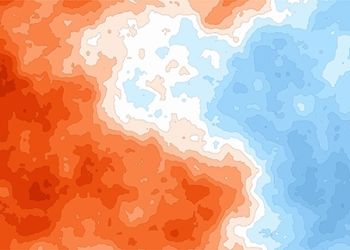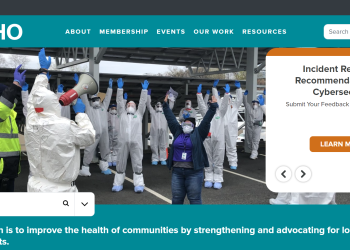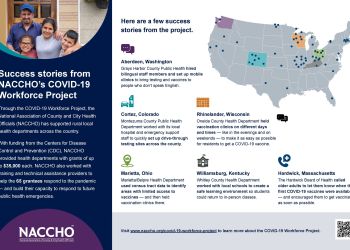By Tiffany Huang, MPH, Program Analyst, Assessment and Planning, NACCHO
“The commodification of people is the biggest issue we face in public health,” stated Kathryn Evans, MPA, a trained community organizer with United Community Services of Johnson County, during the closing general session at NACCHO Annual 2015. Evans spoke compellingly about the roles of power, class oppression, and racism as determinants of health inequities, and along with her fellow panelists, called for public health to act upon them.
Public health has long acknowledged that socioeconomic status is one of the strongest predictors of health outcomes across nearly all diseases and risk factors.1 However, socioeconomic status alone does not adequately capture the meaning of class. As an analogy, consider the distinction between the terms “health disparities” and “health inequities”: Health disparities refers simply to differences in health status that exist between populations, whether by race, ethnicity, socioeconomic status, age, etc;2 health inequities refer to differences in health status that are systemic, patterned, unjust, unnecessary, and actionable.3
By using the term health inequities, we acknowledge more than the mere existence of differences in health status between groups. We acknowledge that these differences are the result of systemic, historical injustices. Moreover, because we also acknowledge that they are unjust, we are compelled to act in order to confront them.
Similarly, socioeconomic status is not the same thing as class. Socioeconomic status measures whether an individual or family is higher or lower on some characteristic, often income level, educational level, or employment status;4 in contrast, class refers to a structure of economic and social power, in which politically powerful groups are able to influence the use of economic resources and aspects of social life that influence living and working conditions.5
That is, rather than thinking of socioeconomic status as simply an individual characteristic (e.g., “Mrs. Smith is white, 67 years old, married, retired, and of low SES”), the idea of class examines relationships among groups of people with varying socioeconomic statuses, as they relate to economic production. Some groups control the means of production (i.e., capital, land, and other resources) whereas other groups provide labor. Thinking about these relationships means thinking about power: Which groups control resources? Which groups control working conditions? Which groups provide labor? Which groups control labor? Power, in turn, affects health and health outcomes.
While many public health professionals are used to thinking about the relationship between socioeconomic status and health, class is a less common consideration. NACCHO’s Roots of Health Inequity Web-based learning collaborative offers public health a starting point for conversations about class, racism, and health. The course provides interactive modules and discussion points for developing common definitions and understanding of the root causes of health inequity. Preview an animation describing how class works at http://rootsofhealthinequity.org/how-class-works.php.
To take the Roots of Health Inequity course, visit http://rootsofhealthinequity.org/ and create a free account. For questions, contact Tiffany Huang at [email protected].
References
- Winkleby, M.A., Jatulis, D. E., Frank, E., & Fortmann, S. P. (1992). Socioeconomic status and health: how education, income, and occupation contribute to risk factors for cardiovascular disease. American Journal of Public Health, 82, 6: 816–820.
- Meyer, P. A., Yoon, P. W., & Kaufmann, R. B. (2013). CDC Health Disparities and Inequalities Report – United States, 2013. Morbidity and Mortality Weekly Report [supplement], 62, 3:3–5. Retrieved July 13, 2015, from http://www.cdc.gov/mmwr/preview/mmwrhtml/su6203a2.htm
- Whitehead, M. M. (1992). The concepts and principles of equity and health. International Journal of Health Services, 22, 3: 429–445.
- Centers for Disease Control and Prevention. (2015). Factors That Contribute to Health Disparities in Cancer webpage. Retrieved July 13, 2015, from http://www.cdc.gov/cancer/healthdisparities/basic_info/challenges.htm
- National Association of County and City Health Officials. (2014). Exploring the Roots of Health Inequity: Essays for Reflection, pp. 38–50. Washington, DC: NACCHO.








